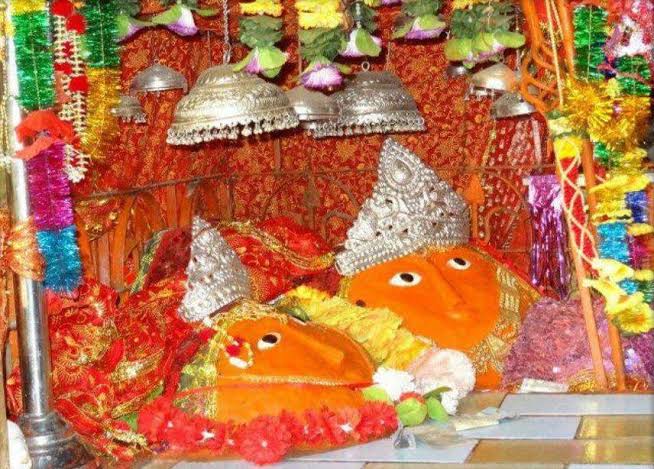Did you know about one of the shakthi peeth in Pakistan. Yes.. That is non other than “Shree Hinglaj Devi Mandir” located in Pakistan, which is considered as one of the 52 Shaktipeeths said to be originated from the fragmented body of “Devi Shakti”.

Hinglaj is an holy shrine, located about 120km North West of Karachi, on the Banks of River Hingol at Makran. The reputation of Hinglaj as an holy place precedes the Arab invasion and the advent of Sufism towards the Sindh region. This sacred place of pilgrimage is particularly situated in a mountain cave “Hinglaj” on river bank of “Hinghol” at the foothills of “Kheerthar” mountains called “Kanraj” in Lyari district of Baluchistan, the province of Pakistan. It is considered one of the famous and biggest “Teeraths” of Indo Pak subcontinent.

It is about 170 miles (250 KM) from Karachi city. One has to go by road via main Karachi – Quetta Highway upto Zero Point for about 75 miles and then by road towards the west via Lyari town and then towards the signal Fauji Camp Stop, crossing Aghore River passing through Goongi River and then finally stopping at Asha Pura Sarai (INN) Worship Spots.
The worship spots for Ganesh, Kalika Mata, Guru Gorakh Nath Dooni, Brahma Kudh, Tir Kundh, Gurunanak Kharao, Ramjarokha Bethak, Aneel Kundh located at Chorasi Mountain, Chandra Goop, Khaririver and Aghore Pooja are the main pilgrimages (Tirthasthan) for devotees of Mata Hinglaj.

This Teerath has its importance in Hindu Believes. Devotees from all around the world
worshipped the “Hinglaj Mata Teerath” for centuries. Many great historical heros like Shree Ramchandra, Great Saints like Guru Gorakh Nath, Guru Nanak Sahib, Dada Mekhan, and other such great Saints, Rishes & Scholars paid visits to Hinglaj Teerath.
In recent few years devotees from Africa and European countries have visited and performed rites at Hinglaj Mata Teerath. Hinglaj.
According to the ancient mythology, it’s believed to be the place where the head that was fallen apart from the immoluted Shareer (Body) of goddess Sati applied with Hingul (sindhoor or vermillion applied just above the forehead on the visible portion of the scalp, after parting the hair in the middle to denote that she was married and that her husband is alive) fell on the ground.

Mythology also include inscription related to the visit by Rama, Sita and Lakshman to this holy site of Hinglaj in during their period of exile.
This was a prime pilgrim location for Indians until the sore partition of 1947 where Indians lost access to this cultural heritage, since it was then bounded by Pakistan. Higlaj wasn’t just the only Indian site for worship, there were many such locations in Pakistan that were worship spots for Indians, but the rage of politics destroyed the cultural heritage by storming such worship spots to abandoned dilapidated ramshackle premises.
